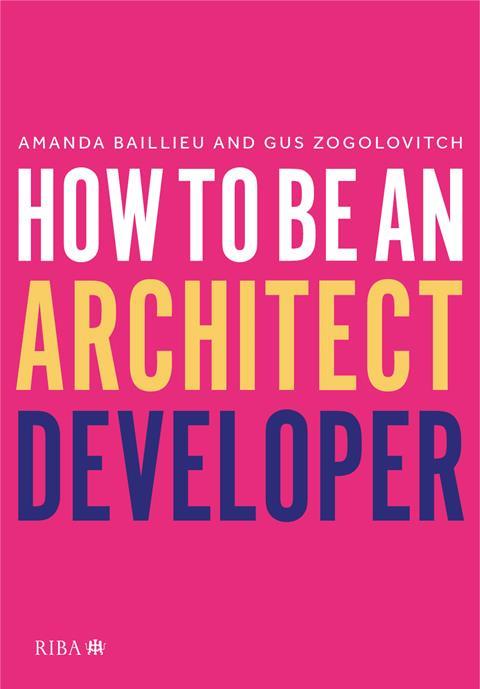A book about architects as developers celebrates the broader creativity, ingenuity and business sense of the profession, writes Eleanor Jolliffe

I recently read Amanda Baillieu (a former editor of BD) and Gus Zogolovitch’s new book How to Be an Architect Developer. This is a short, useful, readable book that packs a punch (not just because of the colour of the cover).
I went into it not intending to become an architect developer. I left it still fairly convinced I don’t want to personally develop anything. However, that is not because it doesn’t seem achievable.
I am also glad that this book is now on my shelf. It offers another perspective on how we view architectural practice, how we can frame design decisions, and what kind of architecture this results in.
One of the most interesting aspects of the book are the case studies throughout of architects who have developed something themselves. These are encouraging and revealing. The architecture is usually wonderful, but the studies left me with several questions.
Firstly, why so few of the architects profiled have gone on to make development a significant proportion of their ongoing practice. Potentially, like me, they just don’t fancy it, or are less keen on the financial risks.
We all know we react differently when spending other people’s money
For all that Baillieu and Zoglovitch’s case studies are instructive and encouraging, proving that almost any architect can develop, it is oddly dispiriting to see how few continue to do so once they’ve succeeded.
The purpose of the book is to engage with the ‘how’; an interesting question for the profession to consider next is the ‘why’ – or perhaps more pertinently the ‘why not’. Incidentally, I don’t think the ‘why not’ is as simple as finance – this is the knee jerk reason, not the real one.
This perhaps leads to the more revealing part of the case studies – how many architects admitted to designing differently when faced with the developer’s perspective on the scheme.
We all know we react differently when spending other people’s money, the question is – as disinterested professionals – should we? Are we best serving our clients if we believe that we would act and design differently if we were our own client?
The encouraging aspect of this however, was that in some cases the differing perspective these architect developers brought to their projects meant that the architectural priorities sometimes trumped typical development priorities. In a couple of cases this drove change in local plans and authority development patterns.
So many projects now call for an engagement with social value – this book demonstrates this can be achieved with the building itself, not just taking on a local apprentice or hosting a workshop in a local school (valuable as these undoubtedly are).
Anything that celebrates and encourages the broader creativity, ingenuity and business sense of architects should be encouraged
While I have skipped past this a bit, the book engages with the ‘how’ very well. It’s clear, jargon free and demystifies processes that I had always seen as a barrier to entry. The structure is sequential, easy to follow and easy to read. It is refreshingly concise – there is no padding of word count here.
Everything in this book feels carefully edited and tightly controlled. I have long thought that it is harder to build, or to write simply – there is nowhere to hide without excessive cornicing and decorative plasterwork, or the flourishes of floral prose. Baillieu and Zogolovitch have a strong grasp of this subject, and a zeal for communicating their message.
Should you personally become an architect developer? Possibly. Should you go and get a copy of this book? Probably.
In a professional landscape in which we increasingly glorify the architectural concept and product, this book grapples with the architectural process. The celebration of architecture that it showcases is in how successfully it serves its communities, meets its brief, and in whether it is viable.
There is barely a mention of how good the staircase is. I love a good staircase as much as the next person but the glorification of image over and above other considerations is hollowing out more than just our profession.
Anything that celebrates and encourages the broader creativity, ingenuity and business sense of architects should be encouraged. Anything that, like this book, teaches us how to do it better, should probably be compulsory reading.
>> Also read: Why we love helping architects to become developers
>> Also read: How to leave your job and become a developer - by someone who’s already done it
Postscript
How to Be an Architect Developer by Amanda Baillieu and Gus Zogolovitch is published by RIBA Publishing.
Eleanor Jolliffe is an associate at Allies and Morrison and a regular Building Design columnist.
















No comments yet